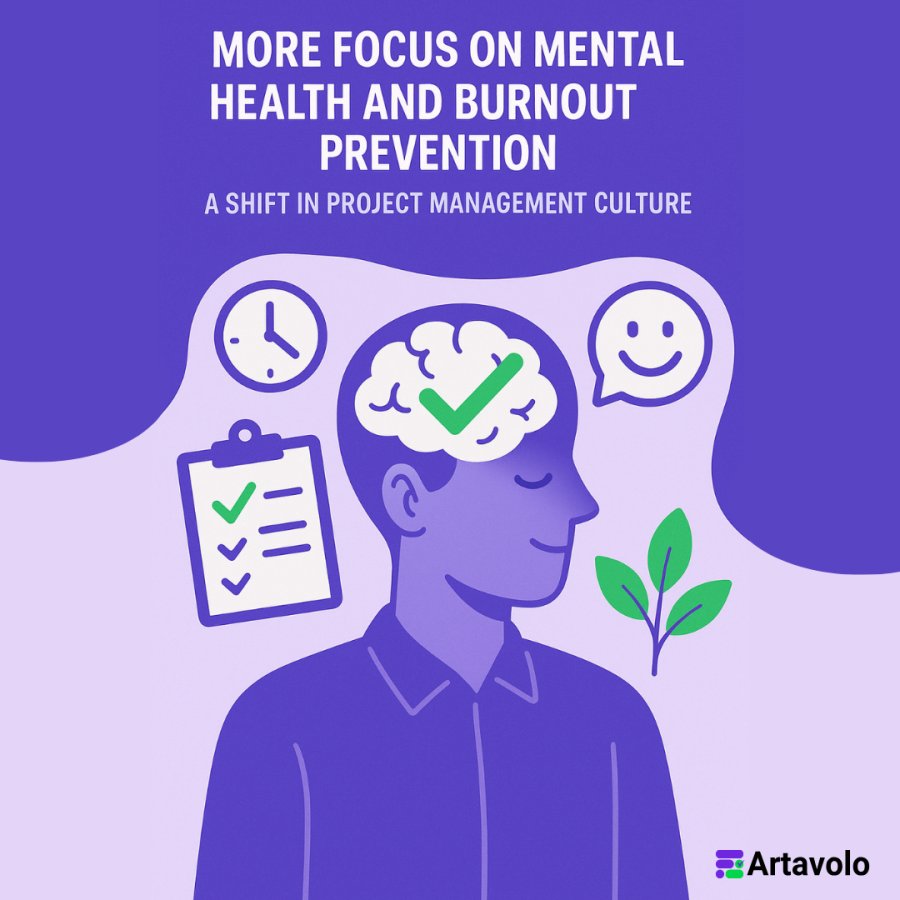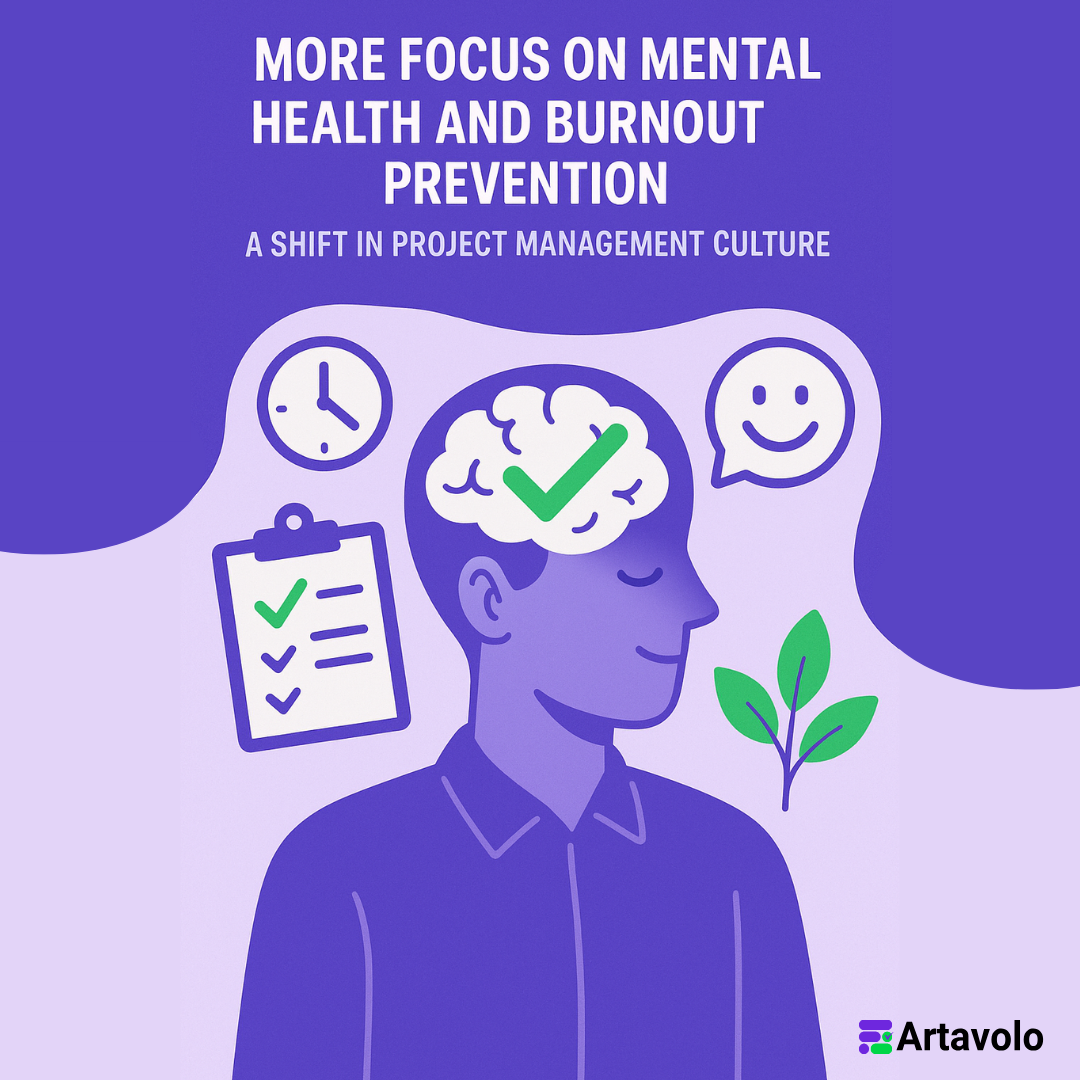In recent years, workplace mental health has emerged from the shadows of stigma to become a central pillar of effective leadership, team productivity, and organizational strategy. While mental health has long been a concern among workers in high-pressure industries, the onset of the COVID-19 pandemic and the subsequent shift to remote work catalyzed an open dialogue across sectors. Project managers, long expected to maintain momentum and deliver results regardless of context, found themselves navigating not only shifting deliverables—but also the emotional wellbeing of their teams.
Today, companies, universities, and research institutions increasingly recognize that mental health and burnout prevention are not just HR buzzwords. They are imperatives. And nowhere is this shift more visible than in the evolving culture of project management.
The Burnout Epidemic: Understanding the Scope
Burnout was formally recognized by the World Health Organization (WHO) in 2019 as an “occupational phenomenon.” Defined by three key dimensions—exhaustion, cynicism, and reduced professional efficacy—burnout has reached critical levels across industries. A 2021 Gallup study revealed that nearly 76% of employees experience burnout on the job at least sometimes, and 28% reported being burned out "very often" or "always."
In project management, where tight deadlines, shifting priorities, and scope creep are the norm, burnout is especially pervasive. Managers juggle stakeholder expectations, team conflicts, resource limitations, and project risk—all while often lacking formal support systems.
Mental Health Meets Project Management
Project management frameworks, such as Agile, Scrum, and PRINCE2, are traditionally built to optimize productivity and efficiency. What they often lack, however, is space for humanity—flexibility for emotional bandwidth, mental fatigue, or the complex interplay between work and life. Fortunately, this is changing.
Universities like Stanford and MIT are conducting research into team cognition and emotional intelligence within project workflows. The Massachusetts Institute of Technology, for instance, launched an initiative exploring “human-centered AI” in collaborative work environments, which includes stress detection in project timelines.
From these academic efforts, and real-world demands, a new generation of project management practices is emerging—ones that prioritize psychological safety and proactive wellness design.
Artavolo: Reimagining the Project Workspace
One of the most promising examples of this shift is Artavolo, a next-generation project management platform. Designed with flexibility, transparency, and AI-assisted collaboration in mind, Artavolo provides more than a place to track tasks—it cultivates a healthier workspace.
Artavolo’s Smart.Editor, for instance, allows team members to leave structured notes that double as action items, easing cognitive load and reducing information loss. Its predictive tools surface potential project delays or bottlenecks early, allowing for proactive course correction rather than last-minute stress.
Most importantly, Artavolo includes built-in tools that let users manage projects in a humane, psychologically supportive way. Team members can indicate stress levels, quietly request task redistribution, or use embedded AI tools for rewriting, translation, or summarization—cutting down on redundant effort and repetitive documentation work.
Academic Support for Change
Universities are beginning to recognize the impact that such tools and cultural changes can have on future workforces. A 2023 study from the University of Cambridge found that students trained on project tools with mental wellness features showed higher team cohesion and lower perceived stress during collaborative capstone projects.
Further, business schools, such as the Wharton School at the University of Pennsylvania, are embedding wellness modules into their project management and leadership courses. The idea is clear: the future PM is not just a taskmaster—they’re an emotional strategist.
Burnout Prevention: From Concept to Practice
What does burnout prevention look like in modern project workflows? It starts with visibility. Tools like Artavolo are making it easier for team members to express concerns without fear. Additionally, project schedules are becoming more modular, with built-in recovery periods and “quiet sprints” to manage intensity.
Second, there's a rising emphasis on asynchronous work—where people are not pressured to collaborate in real-time across time zones. Platforms like Artavolo support this with rich, self-explanatory documents and decision-tracking tools that minimize the need for constant check-ins.
Third, emotional granularity—naming and managing emotions—is entering the workplace. For instance, “project retrospectives” now increasingly include emotional check-ins alongside task reviews. Managers are being trained in active listening and emotional validation, rather than merely conducting performance appraisals.
The Role of AI: Enabler or Stressor?
There’s a growing debate about whether artificial intelligence helps or hinders human wellbeing in the workplace. On one hand, automation can eliminate mundane, repetitive tasks—saving hours of drudgery. On the other, constant notifications, algorithmic tracking, and performance analytics can induce anxiety.
Artavolo threads this needle carefully. Its AI doesn’t micromanage—it augments. Whether it’s helping summarize meeting notes or recommending task deadlines based on past patterns, it’s there to support, not surveil.
The best project management systems today are not those with the most features—but those with the most empathy coded into their architecture.
Universities Leading the Cultural Shift
Universities are not just observing these trends—they are helping lead them. Programs in psychology, computer science, and business are cross-collaborating to shape the next generation of project tools. Interdisciplinary coursework teaches students to approach projects as systems of relationships, not just timelines and tasks.
Courses like “Wellbeing and Work” at the University of Toronto and “Mindfulness and Project Teams” at Berkeley are bridging the gap between science and execution. Faculty are partnering with software companies to co-design tools that reflect real research on cognitive load, attention, and emotional resilience.
Conclusion: Toward a More Sustainable Project Future
Mental health and burnout prevention are no longer optional components of modern project leadership—they are central to success. As more professionals and students encounter the mental toll of high-stakes deliverables, the demand for mindful tools and culture will only increase.
Platforms like Artavolo exemplify the future: intelligent, intuitive systems that protect energy as much as they manage time. The university sector, with its emphasis on research, innovation, and ethical inquiry, is perfectly poised to lead this cultural evolution.
The future of work isn't faster—it’s healthier. And in that future, every project plan will begin with a simple, radical question: how are you feeling?
References
-
World Health Organization. (2019). Burn-out an "occupational phenomenon": International Classification of Diseases.
-
Gallup. (2021). Employee Burnout: Causes and Cures.
-
University of Cambridge. (2023). “Stress, Cohesion, and Capstone Projects: A Longitudinal Study.”
-
Stanford Human-Centered AI Initiative. (2022). “Cognition and Collaboration in AI-supported Workflows.”
-
University of Toronto. “Wellbeing and Work” course syllabus, 2023.
-
Wharton School. (2023). Executive Education on Resilient Leadership.

